1 Chapter 1: Introducing Organizational Communication
Chapter 1: Introducing Organizational Communication

Effective communication is a building block of successful organizations, In other words, communication acts as organizational blood.
All managers and employees need to be aware of how people behave in order to provide the best working environment. Organizational behavior is about how people may be motivated to work together in more effective ways. The interaction required to direct a group toward a set of common goals is called organizational communication.
In each of these interactions, we are occasionally satisfied but sometimes frustrated by incompetence, insensitivity, lack of coordination, and red tape, all of which result from ineffective organizational communication. A deeper understanding of communication permits us to better comprehend the factors that contribute to a successful organization.
It is difficult to come across a job advertisement which does not mention eligibility criteria such as “communicativeness” or “communication skills.” Concepts such as “organizational communication,” “corporate communication” or “business communication” long ago became key terms for management, entrepreneurship and human resources.
What is meant by “organizational communication”? What are its major functions and types? What are the most important communication skills in the workplace? What are the most common barriers and obstacles to contemporary organizational communication? The answers to these and other questions throughout this course will give you a better understanding of the phenomenon and process of organizational communication.
The importance of communication in an organization can be summarized as follows:
- Communication promotes motivation by informing and clarifying the employees about the task to be done, the manner they are performing the task, and how to improve their performance if it is not up to the mark.
- Communication is a source of information to the organizational members for decision-making process as it helps identifying and assessing alternative course of actions.
- Communication also plays a crucial role in altering individual’s attitudes, i.e., a well informed individual will have better attitude than a less-informed individual. Organizational magazines, journals, meetings and various other forms of oral and written communication help in molding employee’s attitudes.
- Communication also helps in socializing. One cannot survive without communication.
- Communication also assists in controlling process. It helps controlling organizational member’s behavior in various ways. There are various levels of hierarchy and certain principles and guidelines that employees must follow in an organization. They must comply with organizational policies, perform their job role efficiently and communicate any work problem and grievance to their superiors. Thus, communication helps in controlling function of management.
An effective and efficient communication system requires managerial proficiency in delivering and receiving messages. A manager must discover various barriers to communication, analyze the reasons for their occurrence and take preventive steps to avoid those barriers. Thus, the primary responsibility of a manager is to develop and maintain an effective communication system in the organization.
So, organizational communication refers to the forms and channels of communication among members of organizations such as corporations, nonprofits or small businesses. Studies have found a strong relationship between the levels of communication in an organization and job performance and satisfaction. Organizational communication can be formal or informal, flow in various directions and make use of various media.
Directions of Communication
Organizational communication takes place upward, downward and horizontally. Downward communication flows from the managerial and executive levels to the staff through formal channels such as policy manuals, rules and regulations and organizational charts. Upward communication is initiated by staff and directed at executives; it frequently takes the form of a complaint or a request. Horizontal communication occurs when colleagues meet to discuss issues of common interest, resolve problems and share information.
Leading

In the book “Organizational Communication: Challenges of Change, Diversity, and Continuity,” William Neher (1997) identifies the five primary functions of business communication as leading, rationalizing, problem-solving, conflict management and compliance gaining. The function of leading is important to enable management to issue instructions in a clear, specific manner so that workers are able to follow them without difficulty. This is generally downward communication.
CONNECT: William Neher: Professor Emeritus at Butler University (LinkedIn)
https://www.linkedin.com/in/william-neher-4742b41a/
Rationalizing

This function enables management to explain the reasons for instructions in a way that workers can understand. In this context, it is downward communication; however, rationalizing is also important for enabling workers to bring issues to the attention of management, using upward communication to do so. If a worker identifies a motivation problem, for example, he may communicate this upward formally to management and use rationalization to highlight the potential impact of the problem on profitability.
Problem-Solving

Most companies hold regular meetings to discuss issues such as production cycles, delivery times, price margins and other areas where unusual situations could arise that may affect the performance of a business. In these meetings, organizational communication plays an important role in tabling problems, brainstorming potential responses and finalizing solutions. In this way, a company obtains maximum benefit from the abilities of those involved in the communication, which flows horizontally and often informally.
Conflict Management
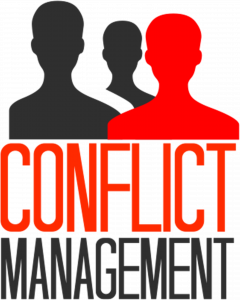
Conflict in the workplace can lead to the loss of talented employees, the lodging of grievances and possibly lawsuits. Managing conflict by bringing all parties together to discuss their differences in a safe, moderated environment is an important function of organizational communications. This type of communication usually involves all three directions of communication, and, although discussions may be informal, the final decisions are usually communicated formally.
Gaining Compliance
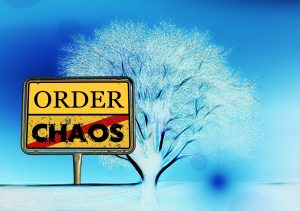
Gaining the compliance of employees is necessary for them to adhere fully to instructions. To do this, management needs to listen to feedback from the staff and to take account of their ideas and comments. Feedback or two-way communication can be both upward and downward or horizontal and may be formal or informal, but it is important for a company to enable open communication channels to motivate and achieve the best performance from employees.
TED Talk: Dan Ariely: What makes us feel good about our work?
This course will cover these areas and more as we move through each module. Looking forward to it!
References
Balzer, W. K. & Gillespie, J. Z. (2007). Job satisfaction. In Rogelberg, S. G. (Ed.). Encyclopedia of industrial and organizational psychology Vol. 1 (pp. 406-413). Thousand Oaks, CA: Sage.
Barnlund, D. C. (2008). A transactional model of communication. In. C. D. Mortensen (Eds.),
Communication theory (2nd ed., pp47-57). New Brunswick, New Jersey: Transaction.
Gatti, Maria (2011). “The Language Of Competence In Corporate Histories For Company Websites”. Journal of Business Communication: 482–502.
Miller, Katherine (2005). Communication Theories: Perspectives, Processes, and Contexts (2nd ed.). McGraw-Hill Higher Education.
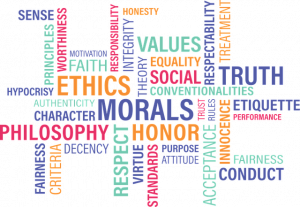
CC0 Public Domain
Our actions affect not only ourselves- but also those around us. Many of our professional decisions involve ethics. If we tell a lie, we can lose someone’s trust and undermine our own integrity. If we use shoddy materials or workmanship on the job, we can jeopardize the safety of others.
Questions of morality and ethics can be found at all levels of society. Ethical behavior is equally important in the workplace as it is in our personal lives. Everywhere business is conducted, ethics matters.
A successful business depends on the trust of various parties—employees, managers, executives, customers, suppliers, and even competitors. Six ethical terms form the foundation of trust upon which ethical business practice is built:
- Ethics
- Values
- Morals
- Integrity
- Character
- Laws
Ethics
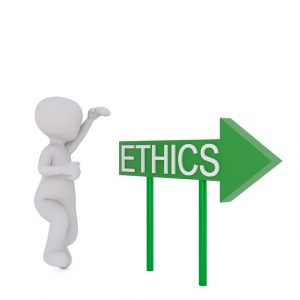
CCO Public Domain
Ethics refers to a set of rules that describes acceptable conduct in society. Ethics serve as a guide to moral daily living and helps us judge whether our behavior can be justified.
Ethics refers to society’s sense of the right way of living our daily lives. It does this by establishing rules, principles, and values on which we can base our conduct. The concepts most directly associated with ethics are truth, honesty, fairness, and equity.
While ethics is a societal concern, it is of critical importance to the professions that serve society. Because professionals such as physicians, attorneys, engineers, and property and facility managers provide services that affect our welfare, they develop professional codes of ethics that establish professional standards for behavior.
Examples of the types of standards found in professional codes of ethics include:
- An attorney or physician maintaining client-patient confidentiality
- An accountant not using client information for personal gain
GSC Library Article:
Treviño, L. K., Weaver, G. R., & Brown, M. E. (2008). It’s lovely at the top: Hierarchical levels, identities, and perceptions of organizational ethics. Business Ethics Quarterly, 18(2), 233-252.
https://search.ebscohost.com/login.aspx?direct=true&AuthType=sso&db=bsu&AN=31883734&site=ehost-live&custid=lifelong&authtype=sso
Values

CCO Public Domain
Values are defined as the acts, customs, and institutions that a group of people regard in a favorable way. Statements of value typically contain words of approval, disapproval, and obligation. Some of these words might be good, bad, should, and should not. However, value judgments do not have to contain specific value words. “That is a lie” does not contain a particular word of disapproval, but the implication that a lie is wrong is understood.
Values are what really matter to us most—what we care about. For instance, family devotion, respect for the environment, and working hard for a day’s pay are three values that can evoke a response in many people.
Morals
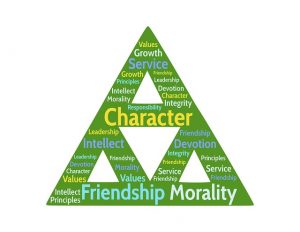
CCO Public Domain
Morals are a set of rules or mode of conduct on which society is based. Certain moral elements are universal, such as the laws forbidding homicide and the basic duties of doing good and furthering the well-being of others. With morals serving as the underpinning of society, there are four points we should remember, says philosopher Robert C. Solomon.
- Moral rules are important: In general, moral rules are rules that help society function in a civilized way.
- Morality consists of universal rules: They apply to everyone, everywhere, and are recognized by everyone as being necessary.
- Morals are objective: They do not consider personal preferences. Right is right and wrong is wrong.
- Morality affects other people: Morality involves considering the well-being of others as reflected by the Golden Rule: Do unto others as you would have them do unto you.
Integrity

CCO Public Domain
To have integrity is to be honest and sincere. Integrity is defined as adhering to a moral code in daily decision making. When people and businesses possess integrity, it means they can be trusted. On the other hand, companies that lack this quality and mislead customers with inferior products or false advertising will suffer the consequences.
Character
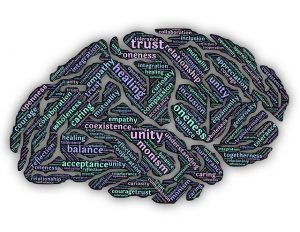
CCO Public Domain
Ethics is not just how we think and act. It is also about character. Character drives what we do when no one is looking. Each person has the ability to build, change, or even destroy his or her own character. We can build our character through the way we live—by thinking good thoughts and performing good acts. Similarly, bad thoughts and behavior can destroy our character.
A person with character has high morals and will act morally in all situations by choice, not force. A person with character will honor his or her commitments. Character pertains to organizations, as well. A company with high character is worthy of trust and respect, acts honestly, and stands by its promises.
Laws
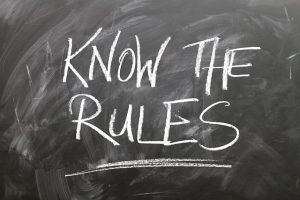
CCO Public Domain
The law is a series of rules and regulations designed to express the needs of the people. Laws protect people from the most blatant and despicable affront to morality, such as murder, rape, and theft.
Laws frequently provide us with a sense of right and wrong and guide our behavior, but not always. While murder is against the law, the law does not always stop someone from killing another out of hatred, anger, or in defense of a personal philosophy.
Laws are instituted as notions of justice and tend to be specific, yet diverse within different societies. Laws have always had a strong connection to morality, ethics, and values. But, not all laws are ethical.
Laws have legalized slavery, segregation, sexism, and apartheid. Although these laws might have reflected society’s values at the time they were enacted, they could not nor will they ever justify immoral behavior. Likewise in business, it is not unlawful to lie to a coworker or on a job application, but both are ethically wrong.
These six concepts—ethics, values, morals, integrity, character, and laws—form the foundation of trust upon which ethical business practice is built.
Professional Codes of Ethics
Many professions and corporations have developed codes of ethics to address their unique business situations. In fact, 90 percent of Fortune 500 companies and nearly half of all corporations have codes of ethics that can be applied to all employees. By developing a code of ethics, an organization makes it clear that employees and members cannot claim ignorance as a defense for unethical conduct.
Benefits of a Corporate Code of Ethics
Codes of ethics help employees strike a balance between the ends and the means used to obtain them. This balance may be one of the most challenging aspects of being an ethical organization.
The Federal Sentencing Guidelines for Organizations provide an additional incentive for having corporate codes of ethics and ethics training. Companies that have made a strong effort to prevent unethical and illegal behavior are likely to receive less severe punishment should an employee be found guilty of breaking the law. The unethical conduct of just a few employees can affect an entire corporation.
Benefits of a Professional Code of Ethics
A professional code of ethics sets a standard for which each member of the profession can be expected to meet. It is a promise to act in a manner that protects the public’s well-being. A professional code of ethics informs the public what to expect of one’s doctor, lawyer, accountant, or property manager. As long as professionals adhere to these standards, the public is willing to have their professional associations create and enforce their ethical codes.
In cases where these codes are repeatedly and grossly violated, the public’s likely response is to demand protective legislation. The Sarbanes-Oxley Act of 2002 was enacted in response to such violations and the ensuing public outcry. Most professionals would prefer to police themselves, rather than have an externally imposed set of regulations. That is a major reason why they create codes of ethics in the first place.
Successful Implementation of a Code of Ethics
Within a corporation, top-down support is critical. If senior management does not act ethically and support others who do, an organization’s ethical code will have little meaning. It is critical for managers and executives to:
- act consistently with the company’s ethical standards
- apply those standards in dealing with employees
Acknowledging and rewarding those whose behaviors are consistent with a company’s code of ethics proclaims to all that ethical behavior is truly valued. On the other hand, promoting and providing bonuses to employees whose successes are due in part to unethical behavior sends an unwanted message.
Remaining ethical is not a static issue. It requires review and evaluation. Companies need to periodically review their priorities and make necessary adjustments. Otherwise, their standards and training become outdated.
Ethics are the principles and values an individual uses to govern his activities and decisions. In an organization, a code of ethics is a set of principles that guide the organization in its programs, policies and decisions for the business. The ethical philosophy an organization uses to conduct business can affect the reputation, productivity and bottom line of the business.
Creating ethical cultures in business: Brooke Deterline at TEDxPresidio
References
Andrews, K. (1989). Ethics in practice. Harvard Business Review (Sept- Oct): 99-104.
Lau, C. (2010). A step forward: Ethics education matters! Journal of Business Ethics, 92(4), 565-584. doi:10.1007/s10551-009-0173-2
Chronological Discovery of Organizational Communication
An organization is a “consciously coordinated social unit composed of two or more people, that functions on a relatively continuous basis to achieve a common goal or set of goals” (Robbins 4). Organizations are dynamic and are created through our communication. Organizational communication is the sending and receiving of messages among interrelated individuals within a particular environment or setting to achieve individual and common goals. Organizational communication is highly contextual and culturally dependent.
The study of organizational communication developed as a result of the rapid changes brought on by the industrial revolution in the past 150 years. The more formal study of organizational communication took root in the mid-1900s and has gained increasing attention over the past 60 years. This text will examine the major discoveries in three predominant periods of organizational communication during this time. The Era of Preparation (1900 to 1940) is the era in which practitioners and scholars focused on the public address, business writing, managerial communication, and persuasion. The Era of Identification and Consolidation (1940-1970) saw the beginnings of business and industrial communication with a certain group and organizational relationships becoming important. During the Era of Maturity and Innovation (1970 –present) organizational communication has worked to rationalize its existence through rigorous research methods and scholarship.
Those in the field of organizational communication study a variety of communication activities in organizational settings. Researchers focus on communication channels, communication climates, network analysis and, superior-subordinate communication. Since the 1980s, this specialization has expanded to include the study of organizational culture, power and conflict management, and organizational rhetoric. Other content areas of focus include communication in groups and teams, leadership, conflict and conflict management, communication networks, decision making and problem-solving, ethics, and communication technology. Introductory organizational communication classrooms often focus on skill development in socialization, interviewing, individual and group presentations, work relationships, performance evaluation, conflict resolution, stress management, decision making, or external publics.
Since the start of the industrial revolution, perspectives regarding organizational communication have continued to be developed and refined. The initial organizational communication perspective, founded on scientific principles, is the classical management perspective which focused on specialization, standardization, and predictability in organizations. Following this perspective were the human relations and human resources perspectives which further tried to incorporate human satisfaction, needs, and participation as a means for creating effective organizations and productive employees. The systems perspective allowed researchers to understand organizations as a “whole greater than the sum of their parts.” This perspective focuses on the interactions of the people who form organizations, with the basic assumption that all people in the organization impact organizational outcomes. Finally, the cultural perspective understands organizations as unique cultures with their own sets of artifacts, values, and basic assumptions. As part of the cultural perspective, we can examine the climate of an organization to reveal how an organization impacts its members, and how members impact an organization.
The future of organizational communication is complex and rapidly changing. As a result, there are many challenges to organizations. Two of the most compelling challenges are ethics and the rapid changes occurring in organizational life. As competition continues to increase, and greater demands are placed on organizations and individuals, ethics is becoming an essential focus of examination for organizational communication and behavior. Likewise, the rapid advances in technology and globalization are creating increased challenges and demands on organizational members.
Organizational Communication Today
In the early stages, organizational communication focused on leaders giving public presentations. More recently, emphasis has focused on all levels of interaction in organizations. Because interpersonal relationships are a large part of organizational communication, a great deal of research focuses on how interpersonal relationships are conducted within the framework of organizational hierarchies.
What we study in organizational communication today has been summarized into eight major areas:
- Communication channels,
- Communication climate,
- Network analysis,
- Superior-subordinate communication,
- the information-processing perspective,
- the rhetorical perspective,
- the cultural perspective, and
- the political perspective (Putnam and Cheney; Kim)
Since the 1980s, organizational communication has expanded to include work on organizational culture, power and conflict management, and organizational rhetoric. While every organizational communication course will emphasize different areas of research, many organizational communication courses focus on developing your skills in organizational socialization, interviewing, giving individual and group presentations, creating positive work relationships, performance evaluation, conflict resolution, stress management, decision making, and communicating with external publics.
Reference:
https://en.wikibooks.org/wiki/Survey_of_Communication_Study/Chapter_11_-_Organizational_Communication

